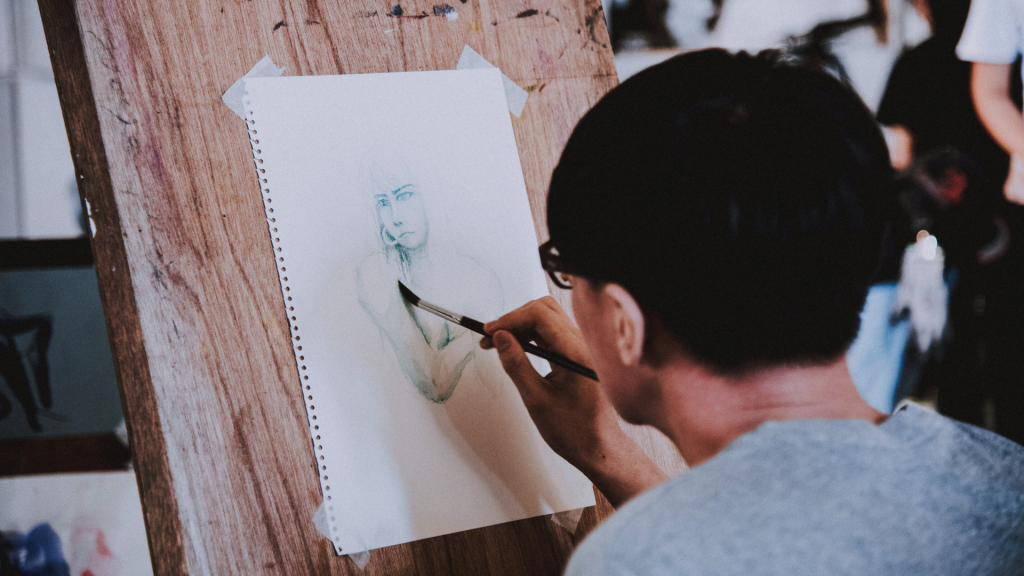Portrait drawing is a fundamental skill for artists looking to capture the essence of their subjects. This step-by-step guide simplifies the process, allowing anyone to draw a portrait with confidence, regardless of their experience level. By breaking down essential techniques, individuals can master this art form and create lifelike representations.
Throughout this tutorial, artists will explore core concepts such as proportions, shading, and facial features. Each step builds on the last, ensuring a comprehensive understanding of how to draw portraits effectively. Whether sketching a friend or creating a masterpiece, these methods will enhance their skills.
Readers will find practical tips and insights that make portrait drawing accessible. This guide is designed to inspire creativity while providing clear direction for those eager to improve their artistry.
Fundamentals of Portrait Drawing
Mastering the fundamentals of portrait drawing is essential for artists seeking to create realistic representations. This section addresses key elements such as proportions, facial features, and the overall construction of the head. Understanding these principles helps achieve accurate and expressive portraits.
Understanding Proportions
Proportions are critical in portrait drawing. They ensure that the elements of the face are correctly sized and positioned relative to each other. A common method is the use of the “Rule of Thirds,” which divides the face into three horizontal sections. The eyes typically sit on the upper third line, while the bottom third accommodates the nose and mouth.
Key Points to Remember:
- The head is roughly an oval shape.
- Average facial features are typically spaced at equal distances.
- For example, the eyes are generally one eye’s width apart.
Analyzing Facial Features
Each facial feature contributes to the individual likeness in a portrait. Artists should study the unique shapes and sizes of these features. The eyes are often called the windows to the soul, and their shape varies significantly from person to person.
Facial Features Breakdown:
- Nose: Varies in width and length. Understanding these variations aids in capturing likeness.
- Mouth: Pay attention to the shape and curvature, which express emotion.
- Ears: Often overlooked, they should be proportionate to the face and placement matters.
Construction of the Head
The construction of the head involves mapping out its basic shapes before adding detail. Start with a rough outline to establish the overall dimensions. The skull can be simplified into basic geometric forms, aiding in the accurate placement of features.
Basic Shapes to Consider:
- Oval: For the head’s outline.
- Cuboid: For the jaw and chin area.
- Circles: For eye placement.
By building on these foundations, artists can create more detailed and proportionate portraits. Using techniques such as light sketching ensures that adjustments can be made easily during the process.
Techniques for Realism
Achieving realism in portrait drawing requires careful consideration of tonal shapes, effective shading techniques, and the accurate portrayal of shadow shapes. Each technique plays a crucial role in creating a lifelike representation.
Application of Tonal Shapes
Tonal shapes provide a foundation for the overall structure of the portrait. Artists should start by mapping out light and dark areas to define volume and depth.
It’s essential to use a range of values, from the lightest highlights to the darkest shadows. Using a blending stump or fingers can help transition between these tones smoothly. Focus on creating soft edges where light subtly falls away and sharp lines in areas that are more defined.
Choosing the right paper texture can also enhance the effect of tonal shapes. A smooth surface allows for finer details, while a rough texture can be beneficial for expressive strokes.
Shading Techniques
Different shading techniques contribute to the overall realism of the portrait. Hatching and cross-hatching are effective for rendering fine details, while stippling can create soft textures.
For a smoother finish, an artist may prefer the gradient shading method, where tonal transitions are executed in a continuous flow. This technique should be practiced in various light conditions to appreciate how shadows shift and change.
Using a light-touch approach to build depth gradually prevents harsh lines and promotes a natural look. Regularly stepping back to evaluate the artwork from a distance allows for adjustments in shading intensity where needed.
Capturing Shadow Shapes
Accurate representation of shadow shapes is vital for depth perception. Artists should carefully observe how shadows fall and the shapes they create on the face and neck.
While drawing, it’s helpful to outline the general forms of shadows before defining the finer details. Using reference photos can aid in understanding different light conditions and shadow placements.
Recognizing variations in shadow density, such as softer shadows near highlighted areas, contributes to a more realistic portrayal. Attention to the direction of light also shapes how shadows interact with the contours of the face. This leads to a comprehensive understanding of realism in portrait drawing.
Mastering Portrait Elements
Understanding the fundamental aspects of portrait elements is crucial for achieving lifelike representations. Key areas include the eyes, cheekbones, jawline, and the sternocleidomastoid muscle. Each part contributes uniquely to the overall likeness and expression in a portrait.
Drawing Lifelike Eyes
Eyes are often called the windows to the soul. Capturing their essence requires attention to detail. Start with the basic shape, which can vary among individuals.
- Iris and Pupil: Use varying shades for the iris, making it appear three-dimensional. Add a darker tone for the pupil to enhance depth.
- Highlights: Include small reflective spots to create a lifelike sparkle.
- Eyelids and Wrinkles: Pay attention to the contour of eyelids and any subtle wrinkles. These add character and realism.
Using different pencil techniques, such as hatching and cross-hatching, can enhance texture and dimension. Consistent practice will improve one’s ability to portray emotions through the eyes.
Defining Cheekbones and Jawline
Cheekbones and jawlines are key structural elements that frame the face. To draw these features convincingly, consider light and shadow.
- Cheekbones: Start by sketching the underlying bone structure. Use softer lines for curves, giving them a gentle appearance.
- Shading: Apply darker shades where shadows naturally fall, particularly beneath the cheekbones. This technique creates depth and highlights the contour.
- Jawline: Define the jawline with firm, confident strokes. Ensure that the angles mimic the subject’s unique features.
Focus on proportion and symmetry to achieve accuracy. Observing real-life subjects provides invaluable insight into how these features interact with light.
Rendering the Sternocleidomastoid
The sternocleidomastoid (SCM) is a pivotal muscle that influences the neck’s appearance in portraits. Capturing it accurately enhances the realism of the overall drawing.
- Location: The SCM runs from the collarbone to the base of the skull. Identifying its length and curvature is crucial for proper placement.
- Tension and Relaxation: Observe how it appears when the head is turned or tilted. The muscle may become pronounced during these movements.
- Shading Technique: Use shading to emphasize its form, applying stronger contrasts where light falls and softening areas in shadow.
By accurately rendering this muscle, artists can add authenticity and a sense of movement to their portraits. Practicing with varied poses improves understanding and execution of this essential feature.
Concluding Advice
As artists conclude their journey in portrait drawing, applying personal experiences and knowledge becomes vital. The following guidance emphasizes the importance of leveraging familiarity in the creation process.
Draw What You Know
Familiarity greatly enhances an artist’s ability to convey emotion and depth. When drawing portraits, individuals should consider subjects with whom they share a connection.
Choosing friends, family, or self-portraits allows for a more intuitive understanding of facial features and expressions. Artists notice subtleties they might overlook with unfamiliar subjects, leading to more accurate depictions.
Utilizing reference photos from one’s own life can also strengthen the drawing. Photos that capture candid moments provide insights into characteristics and personality traits, enriching the final artwork.
Finally, artists should embrace their style, using personal knowledge to guide their techniques and choices. Familiarity not only fosters confidence but also leads to more authentic and relatable portrayals.

